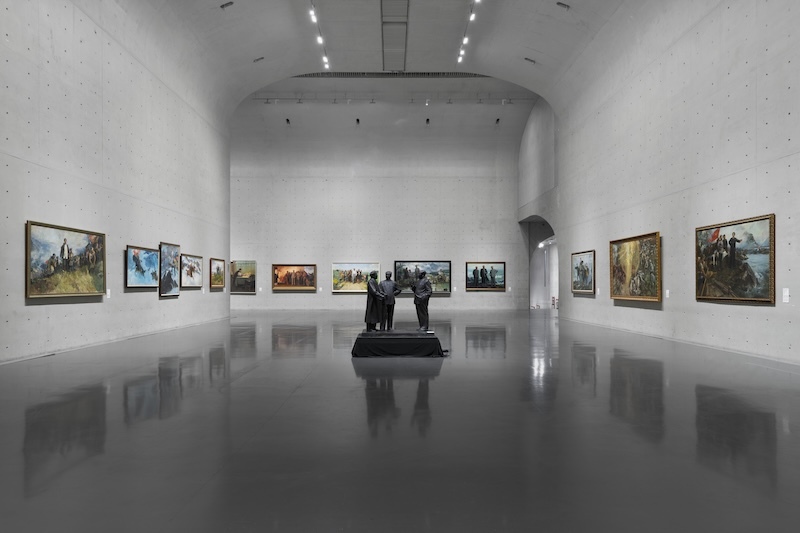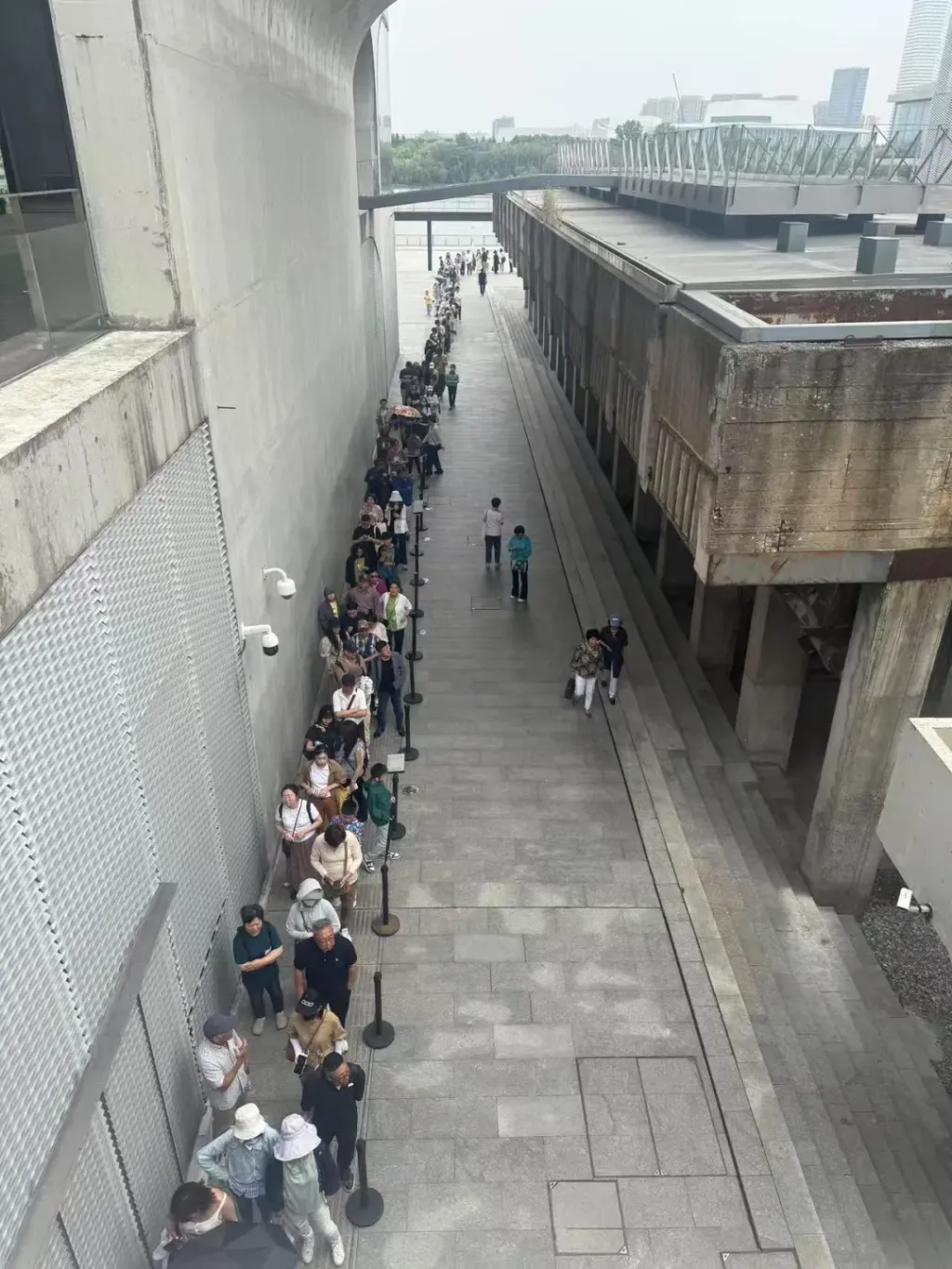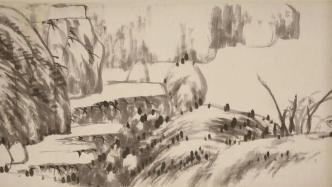
Following the Qing Dynasty chapter of the 10th anniversary series of exhibitions, "When the Stars Are Brilliant - A Special Exhibition of Calligraphy and Painting Art of the Four Kings Wu Yun and the Four Monks", March 24. Shanghai Long Museum (West Bund) presents "Dragon and Warriors—Special Exhibition of Chinese Calligraphy and Painting Art in Ming Dynasty" when the cherry blossoms are in full bloom.
The exhibition exhibits 83 pieces (groups) of calligraphy and painting relics from the early Ming Dynasty to the end of the Ming Dynasty for nearly three hundred years, including the calligraphy, paintings and letters of the Zhejiang School, the Wumen School of Painting, the Songjiang School of Painting and contemporaries. The creators involved are nearly 60 pieces, all from the collections of Liu Yiqian and Wang Wei.
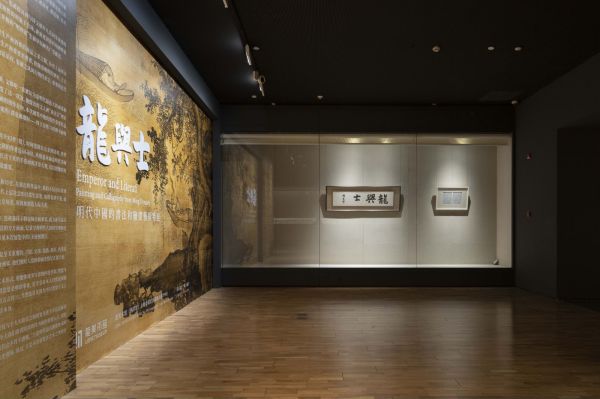
Exhibition hall scene
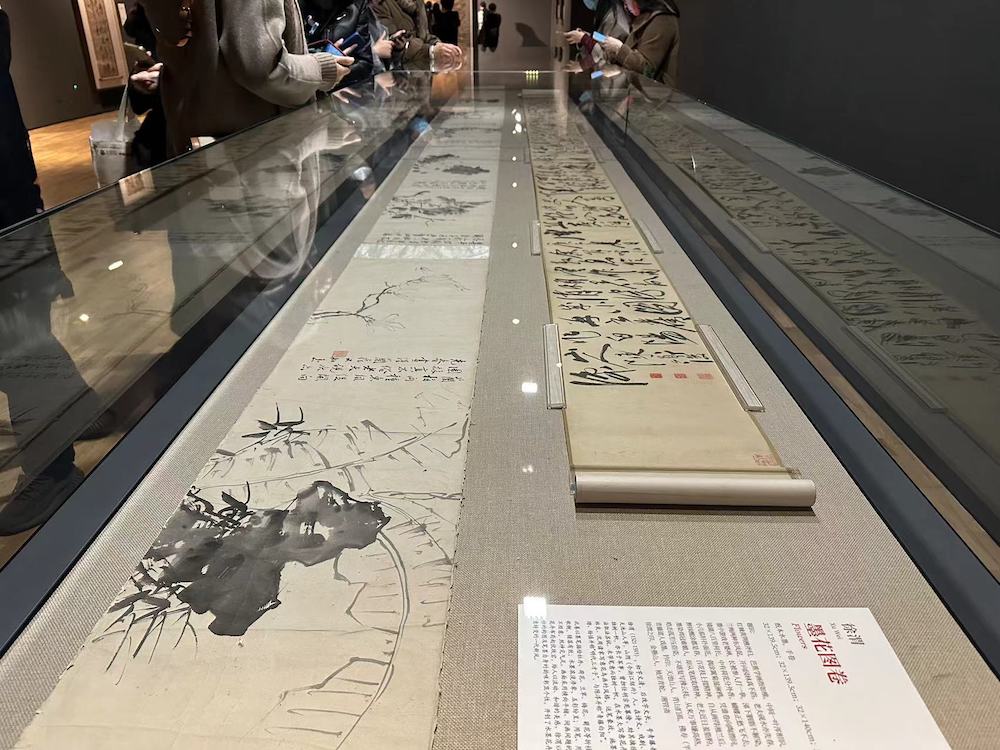
exhibition site
Speaking of the exhibition, Liu Yiqian, the founder and collector of the Long Museum and the general planner of the exhibition, said that he overturned several different ideas before and after, and finally chose 83 pieces (groups) of calligraphy and painting to display the pen and ink of the literati of the Ming Dynasty. "From my point of view, being able to collect Ming calligraphy and painting is the realization of my persistent efforts. Many times, when I collect a Ming Dynasty work, I pretend to be calm on the outside, but I can't calm down for a long time." Liu Yiqian said, "Collection, not only Not just a love of art, but also an interest in history."
The exhibition starts with "Dragon and Scholars", interpreting the complex relationship between imperial power and the scholar-bureaucrat class as one of the key clues to the social evolution of the Ming Dynasty. It also tells the story of "Scholar is the most iconic image in the Ming Dynasty".
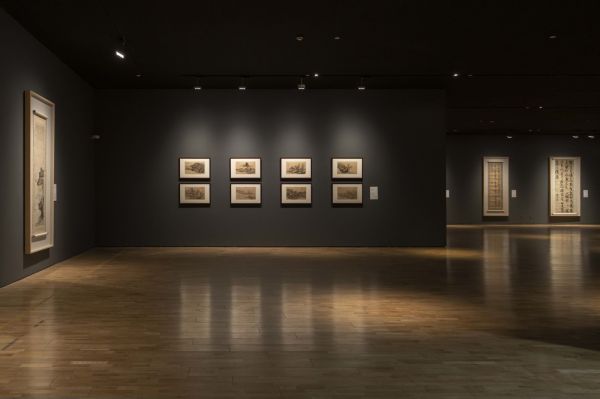
exhibition site
A Brief History of Painting in the Ming Dynasty
The development of Ming Dynasty painting can be roughly divided into three stages. In the early years from Hongwu to Hongzhi, court paintings and Zhejiang School prevailed in the painting world, forming a trend of the times that mainly inherited and carried forward the style of Southern Song Dynasty courtyard painting. Among them, Dai Jin and Wu Wei, representatives of the Zhejiang School and the Jiangxia School, both once entered the court, and their painting style also originated from the style of the Southern Song Dynasty. Therefore, the Zhejiang School has a close relationship with the court painting. As professional painters, they have superb painting skills and comprehensive techniques, and their achievements in landscape painting are particularly outstanding. They influenced a large number of painters inside and outside the academy. Followers include Zhang Lu, Jiang Song, Wang Zhao, Li Zhu, Zhang Qian and others. However, in the later period of the Zhe School, they blindly pursued simplicity and sloppiness, and accumulated habits became harmful, and Zhengde gradually declined. Although Lan Ying in the late Ming Dynasty was called "the army of the Zhejiang School", from the perspective of his apprenticeship and painting style, he has nothing to do with the Zhejiang School.

At the exhibition site, works by Da Da Lv Ji (left) and Zhou Chen (right) are on display
In the early Ming Dynasty, there were still a group of literati painters in the Jiangnan area who inherited the ink painting tradition of the Yuan Dynasty, such as Xu Ben, Wang Fu, Liu Jue, Du Qiong, Yao Shou and others. Xu Ben's landscapes are inherited from Dong Ju's, and his brushwork is vigorous and smooth; Wang Fu likes to use hemp and folded belts to make landscapes, which are as complicated as Wang Meng; Cang thick. Their style of painting can be called the pioneers of Wu School.

Part of Wang Shouren's "Fuluozhen'an Dazai Shu"
In the mid-Ming Dynasty, Suzhou, as the center of the textile industry, gradually became a prosperous metropolis in the south of the Yangtze River. The development of the economy promoted the prosperity of culture. At that time, there was a gathering of talents and famous scholars. The literati and celebrities often gathered for banquets and sang poetry and prose. They inherited and developed the Yuan people's painting tradition of advocating the interest of brush and ink, "morale" and "yige". Among them, Shen Zhou, Wen Zhengming, Tang Yin, and Qiu Ying are the most famous, and they are called "Four Schools of Wu". Shen Zhou and Wen Zhengming are the main representatives. Both of them are indifferent to being an official. Their works mostly describe the scenery in the south of the Yangtze River and the life of literati, expressing the feelings of tranquility and elegance, paying attention to the taste of brushwork and ink, and paying attention to the organic combination of poetry, calligraphy and painting. Tang Yin and Qiu Ying were different from Shen Zhou and Wen Zhengming. Tang Yin changed from a literati to a professional painter who sold paintings for a living. Qiu Ying was a professional painter, and his creation was influenced by literati paintings to a certain extent. The themes and interests were more suitable for urban people. Require. The two of them studied under Zhou Chen, and their painting techniques originated from Li Tang and Liu Songnian, and were also influenced by Shen Zhou, Wen Zhengming, and people from the Northern Song and Yuan Dynasties.
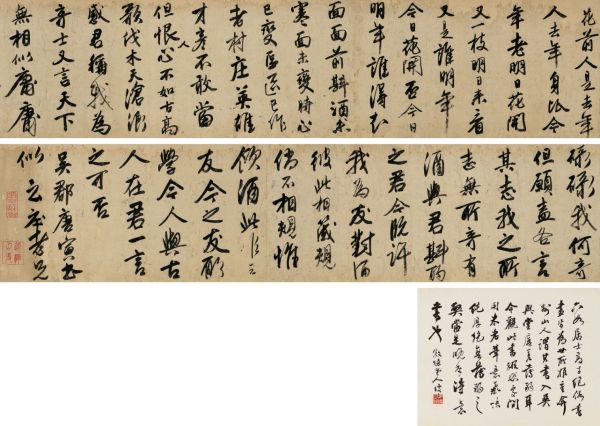
Tang Yin's "Seven Ancient Poems in Running Script"
The outstanding artistic achievements of the four families of Wumen had a huge influence at that time, and there were many scholars. The patriarchal clan of Shen Zhou includes Wang Lun, Chen Huan, Chen Duo, Du Jilong, Xie Shichen and others. There were no less than 20 to 30 people who followed Wen Zhengming, including Wen Jia, Wen Boren, Lu Zhi, Chen Chun and others. Wen Jia's landscapes are sparse and simple, Wen Boren's meticulous, Lu Zhi's vigorous, and Chen Chun's freehand brushwork, all of which have their own characteristics. Among them, Lu Zhi, Chen Chun and Zhou Zhimian are especially innovative in the field of flower and bird painting. Lu Zhi was a student of Wen Zhengming's flower-and-bird painting, drawing on the strengths of Xu Xi and Huang Quan's two schools, creating a new style of meticulous flower-and-bird painting for literati. Chen Chun also came from Wen Zhengming's school. Influenced by Shen Zhou, his flower and bird paintings inherited the freehand brushwork techniques of ink and wash, with refined shapes and free-flowing brush and ink.
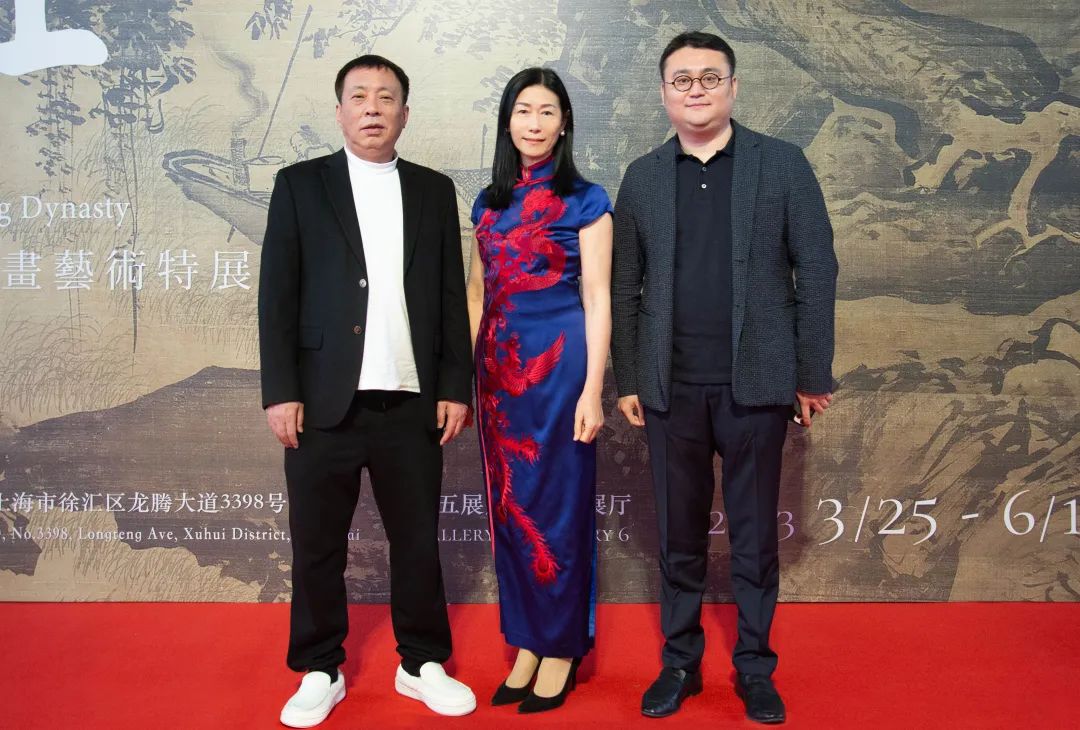
Liu Yiqian, co-founder of Long Museum and chief curator of the exhibition, Wang Wei, director of Long Museum, and Xie Xiaodong, curator of the exhibition. Photography: shaunley

Exhibition site

Part of Qiu Ying's "Character Scroll"
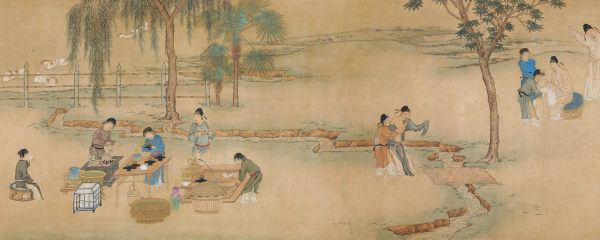
Part of Qiu Ying's "Character Scroll"
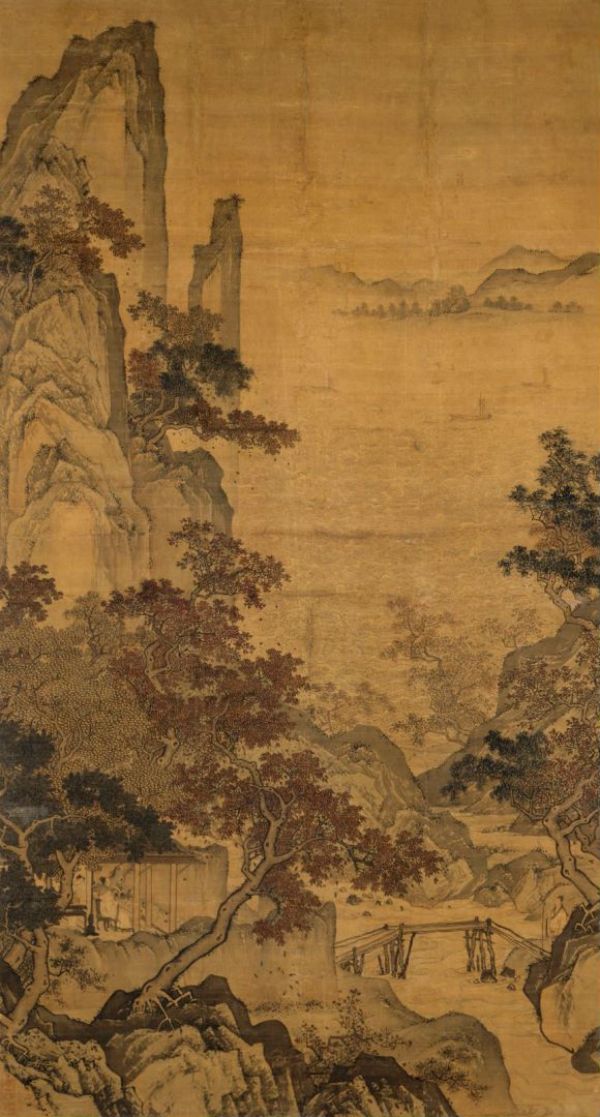
"Watching the Tide" by Zhou Chen
From about Wanli to Chongzhen, a new turning point appeared in the field of painting. Xu Wei further perfected the freehand brushwork of flower-and-bird painting. Chen Hongshou, Cui Zizhong, Ding Yunpeng and others pioneered the painting method of deformed figures. In the late Ming Dynasty, Zhang Hong led the landscape painting of the Wumen School of Painting, which exerted a profound influence on other schools of painting. Among them, the Songjiang School of Painting (Huating School) represented by Dong Qichang was the most famous. Dong Qichang advocated the tradition of literati painting and emphasized The orthodox status of Nanzong painting. Although his theory of "South and North School" is his own theory, it can form a huge social repercussions. Other painters in the Songjiang School of Painting include Gu Zhengyi, Song Xu, Chen Jiru, Zhao Zuo (Su Song School), Shen Shichong (Yun Jian pie) etc.

exhibition site
In addition to the Susong area, there were also many regional schools of landscape painting in the late Ming Dynasty. For example, Lan Ying from Qiantang, Zhejiang created the Wulin School, Xiao Yuncong from Wuhu, Anhui created the Gushu School, and Xiang Yuanbian and Xiang Shengmo from Jiaxing, Zhejiang created the Jiaxing School. In the late Ming and early Qing Dynasties, although there were many names, most of them were influenced by the Wumen School of Painting and Dong Qichang, and belonged to the literati painting system.
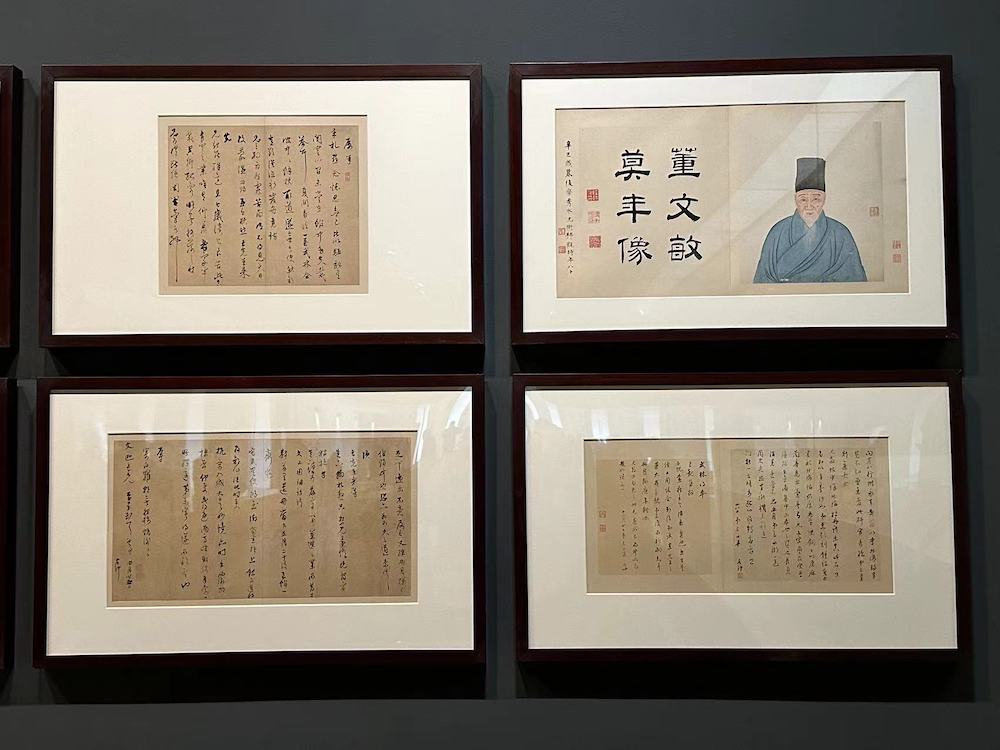
Exhibition site, works by Dong Qichang
A history of literati exchanges in the Ming Dynasty
Comparing the exhibited works and the creators behind the works, one can feel the richness of life in the Ming Dynasty. Most of the authors in the exhibition were born as Scholars and had short or long positions in the imperial court. Among them, Wu Kuan, Wang Shouren, Wang Jia, Zhao Nanxing, Xiong Tingbi, and Shi Kefa are all outstanding figures in the political, ideological, and military history of the Ming Dynasty. representative figure. At the same time, it should be noted that among the "Four Masters of the Ming Dynasty", Shen Zhou remained out of office all his life, Wen Zhengming was only in the officialdom for a short time, Tang Yin made a living painting for life because of the fraud case in the bureau, and Qiu Ying was a professional painter. In the exhibition, there are also many letters and manuscripts, recording the literati exchanges with Shen Zhou, Wen Zhengming, Tang Yin, Zhu Yunming and others as the core.
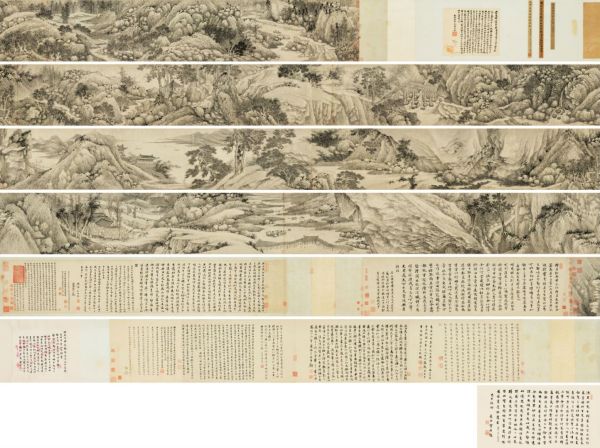
Shen Zhou "Sending Wu Wending's Journey Map and Inscribed Volume"
In the painting "Send Wu Wending's Journey Picture and Inscribe Scroll", Shen Zhou narrates his mood when he is seeing Wu Kuan away with pen and ink. At the beginning, it starts with the winding road along the mountains and rivers, and then enters the hills and turns to the deep valleys. The dangerous peaks and valleys of the clouds. Among the deep mountains and dense forests, there are Qiao Ke springs everywhere, Lanruo villas, thatched pavilions where you can rest and play the piano, and boats where you can cross the river and wading. There is the Xiongyuan of the Song people, and the Yiyun of the Yuan people.

Shen Zhou's "Sending Wu Wending's Journey Map and Inscribed Volume" (partial)
In addition to Wang Shizhen's nearly thousand-word poem postscript, there are also postscripts of thirteen Ming and Qing parents including Zhang Jiuyi, Cheng Yingkui, Zhou Tianqiu, Wang Xuling, Wang Fengsun, and Chen Jieqi.
This work also created Shen Zhou's highest personal auction record so far. This painting was called Shen Zhou's "first stroke" by Wang Shizhen, and Zhang Chou designated this volume as Shen Zhou's "No. 1 masterpiece" in "Authentic Works Daily Record".

Exhibition site
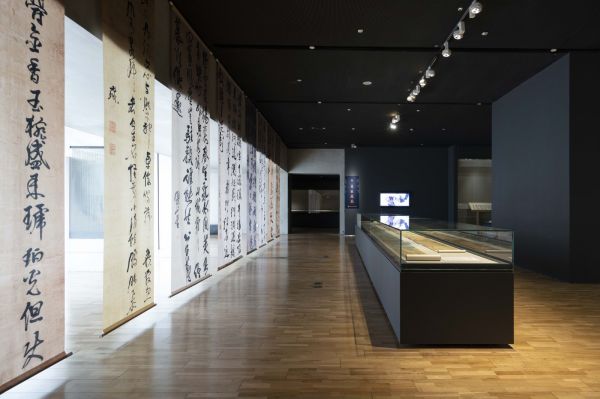
exhibition site
Tang Yin's "Golden Chang Farewell Picture" in the exhibition is also a farewell picture. It was originally in the collection of Wu Hufan, and it was included in "Wu's Painting and Calligraphy". In this volume, Wu Hufan not only inscribed many postscripts, but also inscribed by Wu Hufan at the beginning of the volume, "The authentic scroll of Tang Liuru's farewell to Jinchang. Huang Fuzijun's inscriptions and poems are in the collection of Wu's Meijing Bookstore".

Tang Yin's "Golden Chang Farewell Picture" (partial)

Tang Yin's "Golden Chang's Farewell Picture", Wu Hufan's inscription "Tang Liuru's Golden Chang's Farewell Picture Volume Authentic Scroll"
The picture depicts the scenery of the south of the Yangtze River, the distant mountains return to the sails, the banks of the Liuxi River, and several people standing by the river are holding hands with each other as a gesture of farewell. The spatial relationship is well constructed by framing the scene at a flat distance, using the thickness of the ink and describing the virtual reality of the scene. At the same time, ink wash and light colors complement each other, making the picture present an elegant style. At the end of the volume, there is a poem inscribed by Tang Yin: "Send people off at the Jinchang Pavilion, and the setting sun pours on the wine in the sky. Zhu Zhendiao has no other words, and Yiyi Yangliu is full of love."

Tang Yin's "Golden Chang Farewell Picture" (partial)
"Orchid Pavilion Restoration" is also one of the most important works in this exhibition. Wen Zhengming painted many "Orchid Pavilion Repairs" in his life. Among them, the one in the spring of the third year of Jiajing (1524) collected by the National Palace Museum in Taipei can be described as an elaborate work. The Palace Museum in Beijing has a piece of Wen Zhengming's "Orchid Pavilion Xiu Tu" painted by Wen Zhengming in the 21st year of Jiajing (1542), which was painted with green landscape techniques when he was 73 years old. In the picture, the mountains, rocks and trees are drawn first and then dyed. The work is rigorous and precise. The picture is mainly green, and the light ochre is used to render the rocks at the foot of the mountain, which is thick but elegant.
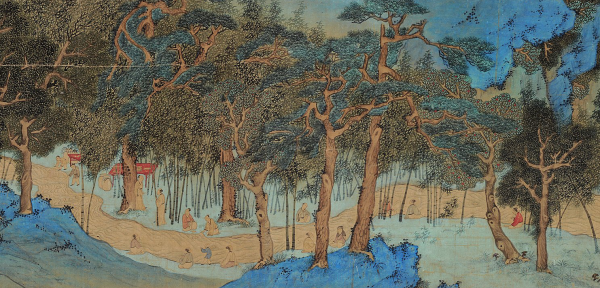
Wen Zhengming's "Orchid Pavilion Restoration Picture and Notes" (partial) on display
The "Orchid Pavilion Restoration Picture and Notes" exhibited this time was made in 1557. It is similar to the composition of a piece in the Forbidden City in Beijing, but the green and green colors are more gorgeous. Among the flowing cups and Qushui, the collectors "sit next". Wang Xizhi appears at the end of the scroll: sitting alone in the tall and spacious pavilion, facing all the participants of the collection, playing the role of the writer of the collection.

Wen Zhengming's "Orchid Pavilion Repairing Pictures and Notes"
It is especially worth mentioning that this hand scroll was unfolded as much as possible. Through the journey, farewell and elegant collection depicted in the painting, the audience can imagine the daily life of scholars in the Ming Dynasty. The large number of postscripts behind the scroll can also be seen The contacts of the literati and the spread of the works since then.
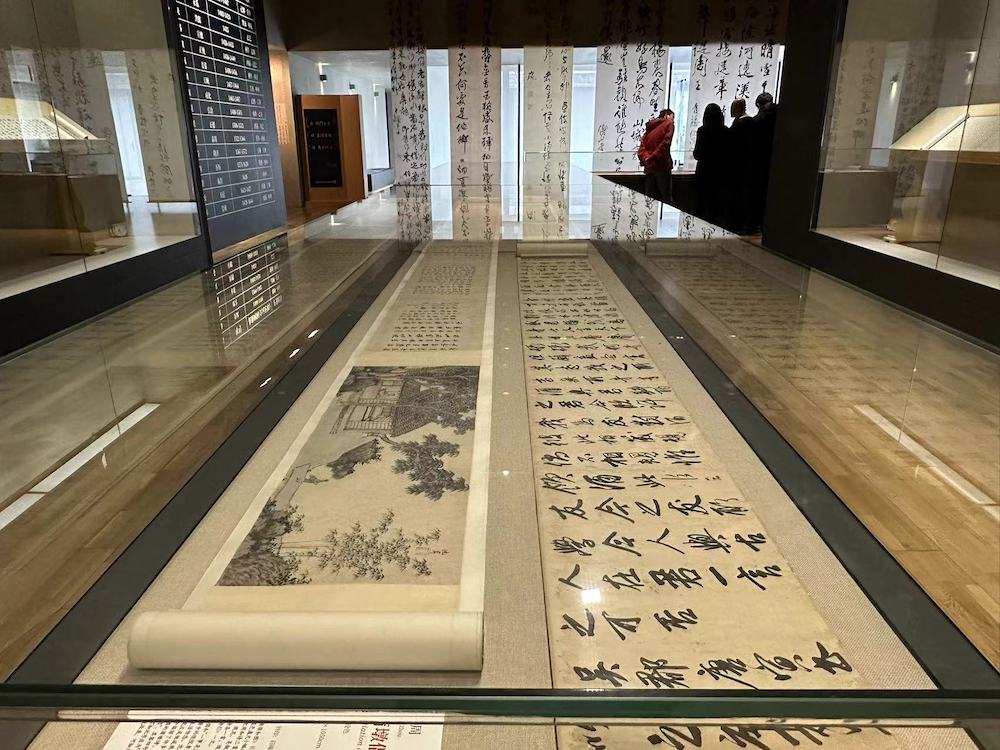
At the exhibition site, many long-scroll works were unfolded
In addition to painting, calligraphy also occupies a considerable proportion in the exhibition. Calligraphy is the most direct expression of the author's inner knowledge. In addition to the calligraphy of Wen Zhengming, Tang Yin, Zhu Yunming, Dong Qichang, Wang Shouren, Wang Jia, Wang Duo, Fu Shan and other Ming scholars on display in this exhibition, there is also a "Five-character Poem in Running Script" written by Emperor Longqing of the Ming Dynasty. "Light shoots bullfighting", which shows that writing runs through various life scenes of the literati class.
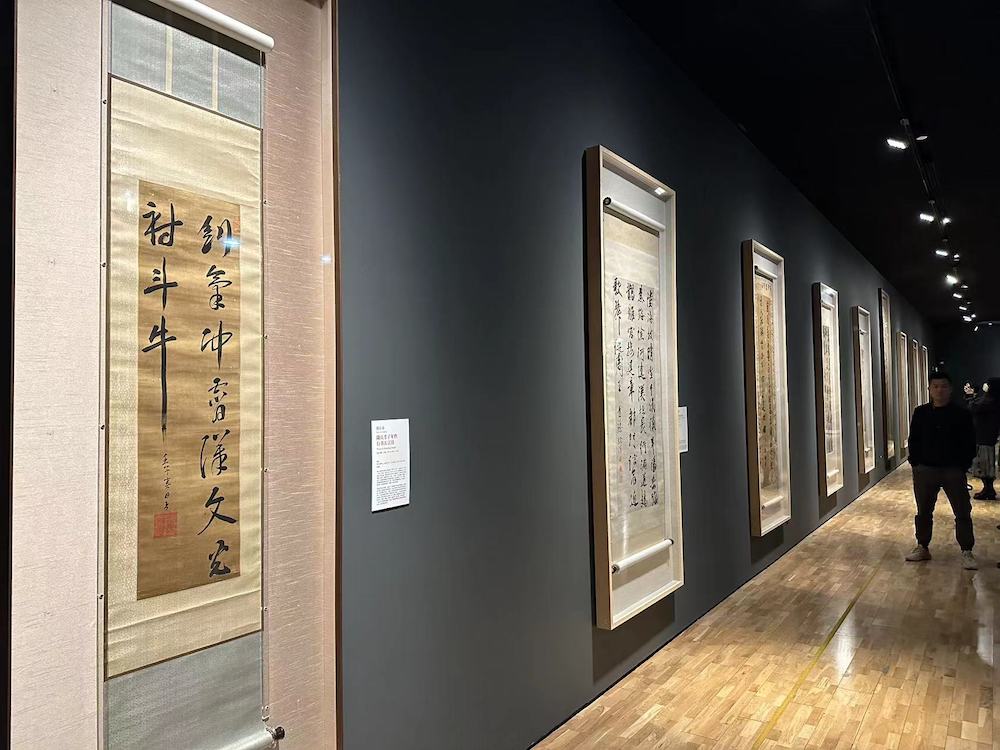
exhibition site
Among them, Dong Qichang's "Yellow Valley Old Man's Ruler" is written on silk, and the ink and brush are both free and flexible, with a clear charm.
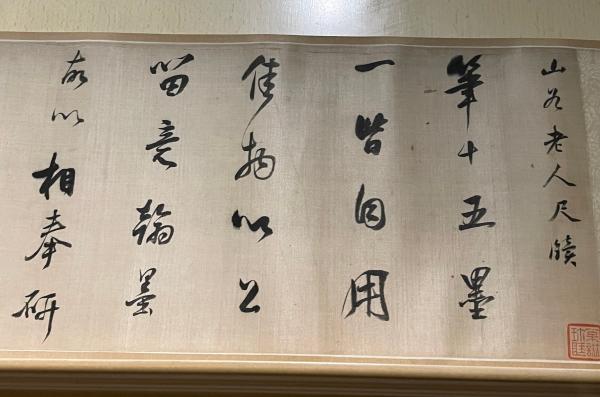
Dong Qichang's "Old Man in the Yellow Valley"

Xing Tong's "Run Script Li Bai's Seven Character Poems"
On the occasion of the 10th anniversary of the Long Museum, sharing private collections with the public shows the responsibility of the museum. Compared with Shanghai Museum's academic exhibitions that start with research, "Dragon and Warrior" has nine chapters, which are more like the presentation and display of cultural relics by category. The exhibition presents the atmosphere of calligraphy and painting in the Ming Dynasty, and it is also worthy of researchers in various fields to study the works themselves and the intersecting stories behind the works.
It is reported that the exhibition will last until June 18.

Shen Zhou's "Sending Wu Wending's Journey Map and Inscribed Volume" (partial)

Tang Yin and Jin Chang's farewell picture (partial)
